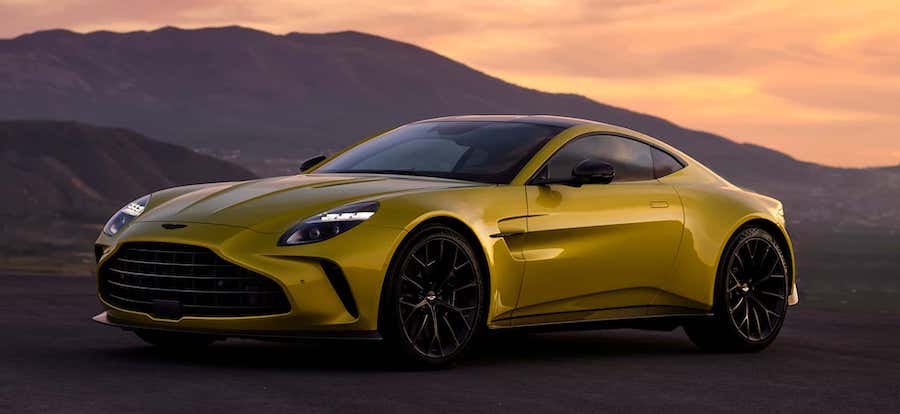2025 Aston Martin Vantage Gets 656 HP And A Much-Needed Facelift

Aston Martin has been making the Vantage for 74 years. The current generation of the two-door GT car has been on sale since 2018, and after six years on the market, it's receiving a massive update. Think of it like a regular mid-cycle facelift, but full of mechanical stuff you actually care about. New camshafts, revised gearing, chassis alterations, that sort of thing. It also looks way better.
The end result of these changes is naturally impressive. The Mercedes-sourced 4.0-liter V8 engine in the Vantage now produces a massive 656 horsepower (665PS), 153 horses over the old car. This isn't the result of just a couple more pounds of boost, but of the aforementioned cams, bigger turbos, and an altered compression ratio. A total of three new heat exchangers have been added to manage both coolant and charge air temperature. The oil cooler is also bigger. Seems like there's a lot of heat going on here.
The AMG V8 is backed up by the tried-and-true 8-speed ZF automatic transmission, which sends power to the rear wheels via an electronic limited-slip differential. The final drive on the diff has been shortened to 3.083:1 to enable quicker acceleration, but it hasn't affected the Vantage's long-legged top speed. The new Aston can not only sprint to 60 mph in just 3.4 seconds, but reach a top speed of 202 mph.
The new Vantage, like the old car, is glued together. In the automotive world, they call this bonding. The nature of the process allows for some flexibility in the chassis construction, which Aston has decided to take advantage of. The new car has received a revised underbody that adds torsional rigidity. The company has also repositioned one of the primary front cross-members, which it says increases the stiffness of the suspension mounting points and improves steering feel. The strut brace is lighter and stiffer, too. Who doesn't like a lighter and stiffer strut brace?
Chassis rigidity has likewise been improved out back with a variety of changes, which enable the car's new Bilstein DTX adaptive dampers to perform even better. It's hard to quantify on paper what all of this adds up to, but Aston insists that behind the wheel there are tangible differences between the new and old setups.
Software enables all of these hardware changes. Aston says the car's various traction-managing modes, launch control system, and electronic power steering have all been retuned to deliver more performance and driver engagement. The company went on at length concerning how all these systems gather data and operate, but the true test will be how it all adds up on a twisty road.
Bringing all of this technology to a stop is a braking system consisting of front 400mm steel rotors with six-piston calipers and rear 360mm rotors with four-piston calipers. A set of carbon ceramics is also optional, which sheds nearly 60 pounds of unsprung weight.
There's more changes going on here than can reasonably be listed outside of a spreadsheet, but the bottom line is, just look at the thing. It's over an inch wider than the outgoing car and the body panels have been resurfaced considerably. It's a two-door GT car with the engine up front and drive to the rear wheels. The proportions can only go so wrong. We've also already seen most of this car at Daytona, which nobody seemed to notice.
Deliveries of the new Vantage will begin in Q2 2024, with pricing likely to be announced around that time as well.





Related News
